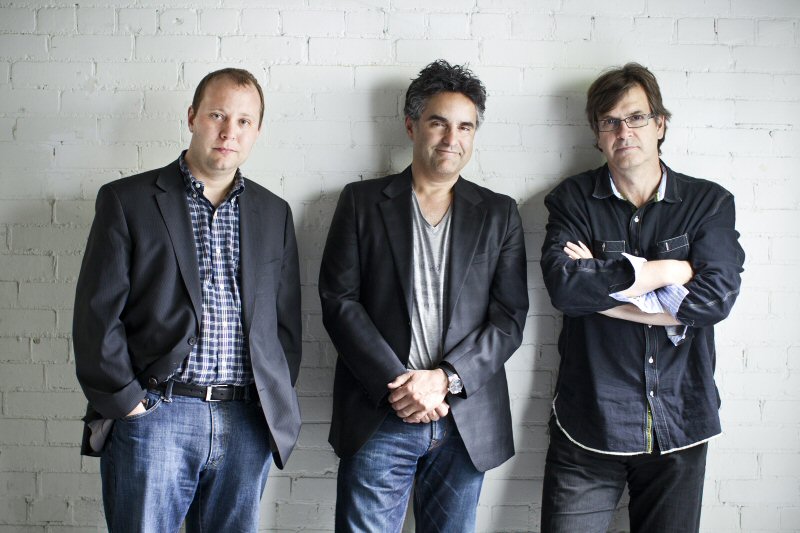If there is one thing in Canadian startup land I have heard repeatedly since moving back from California it is in regards to the lack of ‘risk tolerance’ of VCs here. When I was on the operational side of things I didn’t know many Canadian VCs so I couldn’t really comment, but I heard the stories. In fact, I will be completely honest that the idea of joining a Canadian VC fund was the furthest thing from my mind.
 Before I share my thoughts on risk tolerance let me start with a few points. First, I think that we can all agree the landscape is improving. There is a new generation of entrepreneurs, investors and community leaders emerging. I am blown away at how different things are now compared to five years ago.
Before I share my thoughts on risk tolerance let me start with a few points. First, I think that we can all agree the landscape is improving. There is a new generation of entrepreneurs, investors and community leaders emerging. I am blown away at how different things are now compared to five years ago.
Second, we need to once again state that Canada is NOT the Silicon Valley. It is a silly comparison even from a geographical perspective as comparing a small region with critical mass to one of the largest countries in the world is insane. Vancouver, Toronto and Montréal are not the Silicon Valley in the same way that Boston, Austin, New York and Des Moines are not either. Anyone who sees Canada as its own insulated eco-system is completely out-of-tune with reality. Capital and technology knows no borders. Mark nailed this earlier this week.
Lastly, there is a level of talent, experience and excellence in the Silicon Valley that can’t be found anywhere else. There is a reason Facebook moved to Palo Alto in its early days. There were entrepreneurs and investors who had been exploring the potential of a social web for almost a decade beforehand. No where else in North America could you find this. Pinterest moved from Kansas City to San Francisco for the same reason. One of iNovia’s portfolio companies, AppDirect, started in the Silicon Valley as the founders (Canadian btw!) knew that the talent they needed to build a large-scale enterprise platform was there.
So what can Canada, or anywhere outside of the Silicon Valley for that matter, do well. I can both observe and predict to answer this question. In recent years it has become apparent that B2B SaaS companies can be built anywhere. Look at the thriving companies across Canada – HootSuite, Shopify, Freshbooks, Lightspeed, etc. All SaaS companies. This is not unique to Canada either. ExactTarget was built in Indianapolis. MailChimp in Atlanta. eCommerce companies have similar characteristics. Amazon is in Seattle. Wayfair is in Boston. Groupon is in Chicago. Beyond the Rack is in Montréal. However, it is hard to name large consumer Internet, enterprise platform, networking or hardware companies outside of the Silicon Valley. Of course, there are a few outliers – Tumblr in NYC for example.
The other thing that Canada, or any region, can do well is build critical mass in a brand new and emerging market. RIM (BlackBerry) did this in the Waterloo region by leading the emergence of smartphones. Calgary has been the hub of most stock photography and graphics companies over the last 20 years. Route 128 in Boston dominated the minicomputer industry back in the 70s and 80s.
All of this results in the eco-system we find ourselves in and behaviour of investors. It is less likely that a consumer application with no traction will get funded in Canada because there are not funds big enough to make a long bet on it and there isn’t the talent that improves the chance of success. We also lack senior management talent, especially in sales and marketing, as it generally resides were the majority of customers – in the US. This is why many Canadian startups build its sales and marketing teams in the States. We often proactively syndicate larger Canadian investments with US funds as they bring complimentary resources to the table and can significantly mitigate future financing risk as they have deeper pockets. All of these factors results in the eco-system we find ourselves in. Blame the system, not the players as David Crow would say.
One last factor in determining risk tolerance is rarely discussed and it is simple numbers. Investing very early in a company with no traction does require incredible intelligence, it requires incredible conviction. Savvy entrepreneurs know that to find the investor that has that conviction is going to be tough so the best approach is as a pure numbers game. This means they talk to a ton of funds. Tim Westergren, founder of Pandora, said that he had over 300 VC pitch meetings before getting funding. 300! In Canada there are not a lot of VCs, lets say 10. There are very high odds that you can talk to every fund in Canada and not find the conviction you are looking for in any of them. It is simple math – if you are looking for a needle in a haystack do you have better odds looking in 10 places or 300? Unfortunately, this is then chalked up to an issue with ‘risk tolerance.’ I can’t speak for every VC across the country, but I can report that approximately half of our initial investments are made before there is a dollar of revenue in the company.
My advice to entrepreneurs would be to start local as you may find the investor that has the same convictions you hold. They may be able to connect you to US investors to put a strong syndicate together as well. What you shouldn’t do is talk to the local VCs and then complain about risk tolerance – even if there is truth to it. The successful entrepreneurs get on their horse and find ways to get in front of investors from the Valley, New York and even overseas. Ryan found his first investors in the US. Yona found his first angel investor in Europe! Jack and Rian found their first investor in Germany!
We have seen a ton of US-led investments in Canada recently and this is great news. Often this is perceived as a problem in Canada. I disagree – it is great. In many of those cases local VCs passed or perhaps they lost out as the deal became competitive. That is completely fine as well. In the past Canadian investors were forced to be generalists, but I hope this recent trend drives more domain focus within Canadian VCs. As much as we need world-class entrepreneurs and startups we also need, to a lesser extent, world-class funds and investors. This is why I went against my initial instincts and joined a VC fund in Canada – the team was focused on becoming a leading North American fund and was actively investing in the US. I believed that this was the right approach and the only way we are going to be able to compete in the long run as capital becomes even more fluent across borders. Canada is a small player on the global tech stage and as a friend of mine used to always say “What’s so great about being the best hockey player in Kuwait?”
Lets all aim higher.
[Ed. note: This originally appeared on Kevin Swan’s Once A Beekeeper on August 12, 2013, it is republished with permission.]








 We have also decided to include a brief fireside chat with
We have also decided to include a brief fireside chat with 





